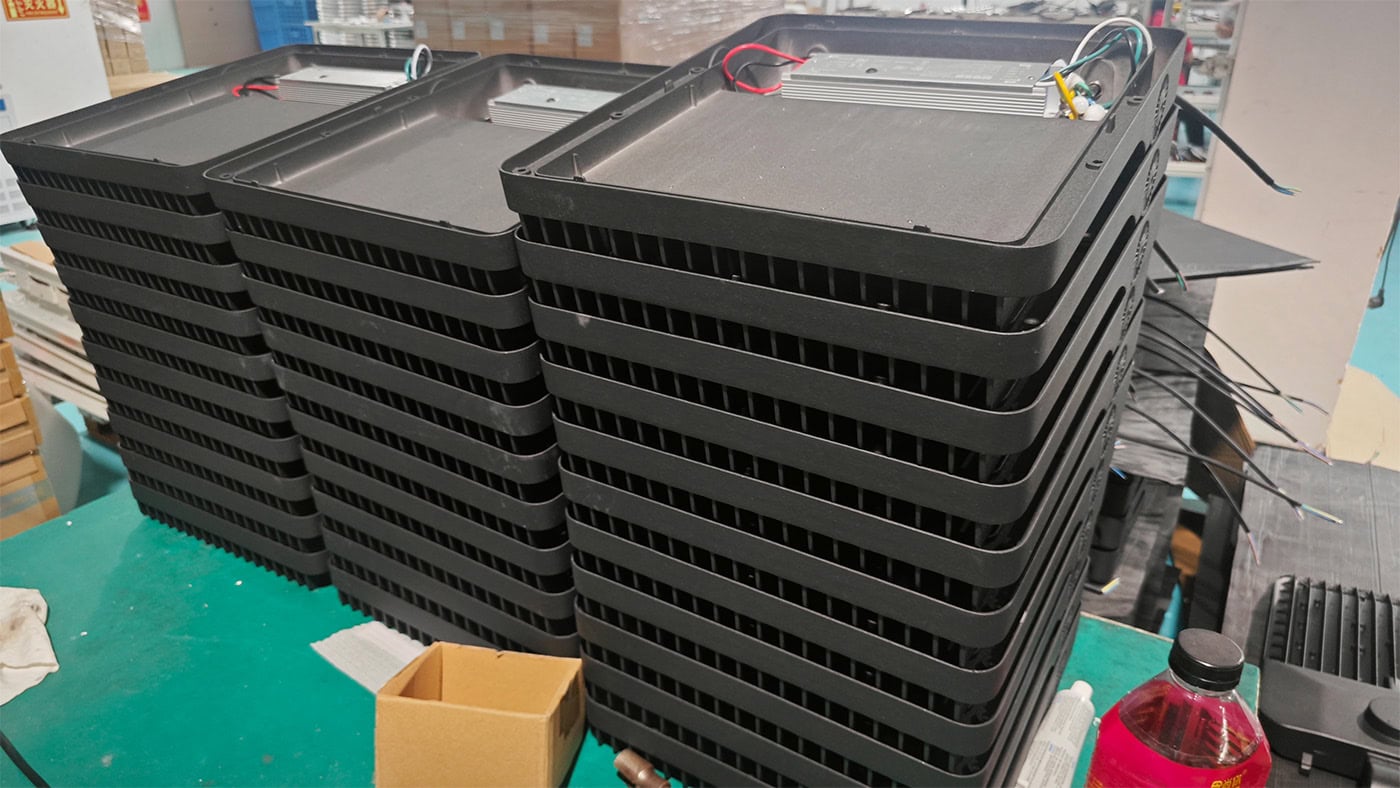Aluminium fabrication used in LED lighting is however largely based on performance, efficiency, and longevity. Die casting aluminum and extrusion aluminum are the two most commonly applied methods that are used in LED housing and LED components. The process of die casting aluminium and extrusion aluminium differs and would make a big difference in the quality of LED lights if chosen. This article delves into the differences between die casting aluminium and extrusion aluminium focusing on their applications in LED lighting.
What is Die Casting Aluminum?
Die casting is a manufacturing process that involves forcing molten aluminium into a mould under high pressure. Usually, steel moulds are made for producing a specific shape or particular detail. When the aluminium cools and solidifies, the mould is open and the finished part is removed. Die casting is excellent in this kind of complex shape with an excellent surface finish and very tight tolerances.

Advantages of Die Casting Aluminum
Precision and Detail: The advantage of die casting aluminium is that the process itself can achieve high precision in manufacturing, for which it is designed. Thus, with LED housings and components, it is able to achieve intricate designs. The resulting parts often have a smooth surface finish, which is essential for aesthetics and performance.
Mass Production
This technique is best suited for mass production. Once the first mould is created, the same parts can be produced efficiently, in a big number, thereby saving cost at the end of manufacturing.
Strength and Sturdiness
Parts cast from die casting aluminium are stronger and sturdier than those manufactured from any other process. The high-pressure process outcome is a denser material, which is best suitable for components that must resist different environmental conditions.
Excellent Thermal Conductivity
Aluminium die castings have good thermal conductivity, which is very important in the dissipation of heat in LED lights. Efficient dissipation of heat elongates the life of LEDs and improves their operations.
Disadvantages of Die Casting Aluminum
- High Initial Tooling Cost: The cost of creating the moulds for the die casting process can be very high in the initial stages. This makes it less workable for low volume runs, wherein the cost per unit is substantially increased.
- Small material options: Die casting involves only specific aluminium alloys, which would limit property selection for a specific use.
Design changes are difficult
The design becomes difficult and expensive if modifications are in place after the mould has been created because it often demands a new mould.
What is Extruded Aluminum?
Extrusion aluminium is a process in which alloys of aluminium, when heated and then forced through a die, take the form of long sections of material having a constant cross-sectional profile. With such an adaptation, it has gained wide usage in the fabrication of uniform-shaped components, especially rods and tubes and profiles that further can be cut to required lengths for different applications and uses, such as in LED lights.
Advantages in Extrusion Aluminium
Versatile Shapes: Extrusion can be used to create diverse shapes and profiles, which gives it much greater flexibility for a variety of design needs within LED lighting. This is an adaptability that allows for bespoke solutions specifically geared to certain applications.
Lower Initial Costs
The initial investment for the creation of an extrusion die tends to be less than in the production of a die casting mould, hence extrusion is more economical for low volume runs or prototype development.
Good Surface Finish
Extruded aluminium tends to possess a good surface finish. This can be further enhanced by anodizing or painting. This enhances the aesthetic appeal of the material, besides protecting it further.
- Material Efficiency: The extrusion process tends to produce less wasted material during the production of aluminium components as compared to the die casting process. Thus, it is considered more environmentally friendly when it comes to producing aluminium parts.
- Lower Accuracy: Though an important advantage of extrusion is the good deal of dimensional control, the process is less accurate in its detail and precision compared to die-casting, especially for complex shapes. This may open the door for higher tolerances that may not be suitable for all the applications related to LEDs.
- Limited Complexity: Extruded parts are typically not as sophisticated as the designs of die-cast components. More than this process is better suited to simpler shapes, which may limit creativity in designing.
- Weaker Structural Integrity: Aluminium parts made by the process of extrusion are not as strong as those made from die cast, particularly for high-stress applications. By nature, the process may sometimes involve internal defects that would impact performance adversely.
Comparison in Applications in LED Lighting
Die casting against extrusion for aluminium fabrication in LED light definitely depends on several factors, with each different based on the project requirements. Some of these factors are as follows, in bold outlines below:
Design complexity
If complex geometries are required, for instance unique optics or housings, then die casting will typically be the better option. This is because die casting enables precision features capable of aesthetic and functional detail, providing excellent lead times and, in many cases, reducing complexity and hence cost.
Production Volume
In high-volume production, die casting becomes more cost-effective only once the basic mold is designed. However, when the volume of the product is low or where it is needed quickly, extrusion could be cheaper on tooling as the tools needed are less costly in contrast to die casting.
Heat Dissipation
Proper heat management is crucial to assure the long life of LED lights. Die-cast and extruded aluminium are both very much famous for good thermal conductivity, but due to their higher density structure, die-cast components may have an edge in heat dissipation, at least in high-output LEDs.
Customization and Flexibility
Extrusion also tends to offer greater flexibility in the creation of a wide range of customised shapes or profiles. If a design requires very precise measurements or distinctive configurations, then extrusion might be the better process for that. Additionally, the extrusion die can be easily replaced, and it would be ideal for projects that might have their designs altered.
Cost Considerations
Although die casting is suitable for high volume productions since costs per piece tend to become lower, the investment will never be recovered if the number of units is low. Extrusion, on the other hand, can be used in the production and make an economical alternative for smaller volume requirements without sacrificing the quality aspect.
Conclusion
There are particular merits and demerits for both die cast aluminium and extruded aluminium in the production of aluminium parts for LED lights. The choice between these two methods is a particularistic need of the project based on variables such as design complexity, volume of production, heat dissipation, customization, and cost. Once understood, the fundamental differences between these two manufacturing processes will lead designers and manufacturers to make better decisions toward improving the performance and longevity of their LED lighting solutions.
 LED Lighting Manufacturer in China
LED Lighting Manufacturer in China

WhatsApp
Scan the QR Code to start a WhatsApp chat with us.